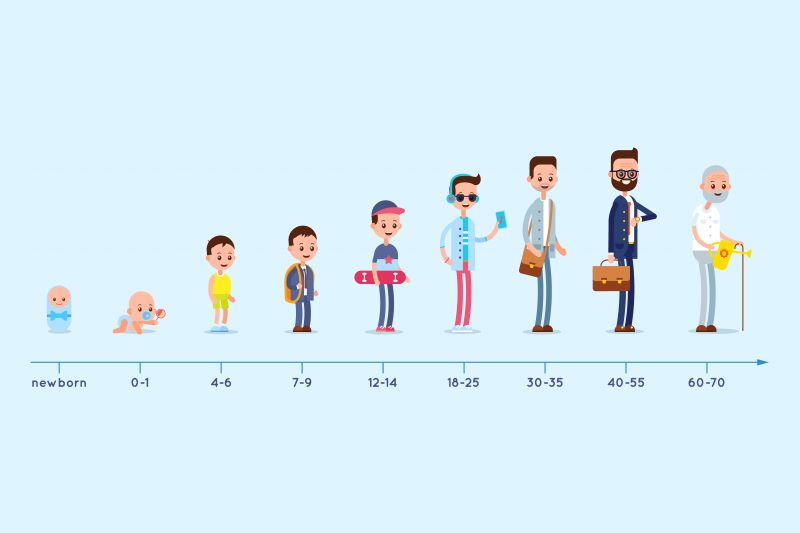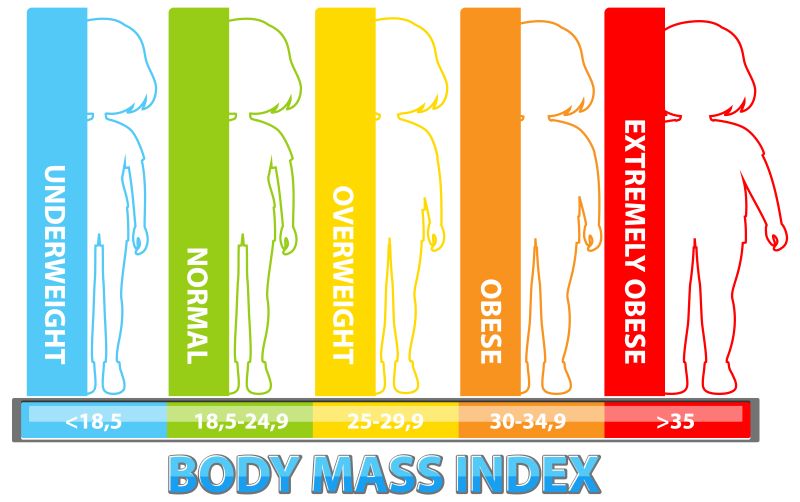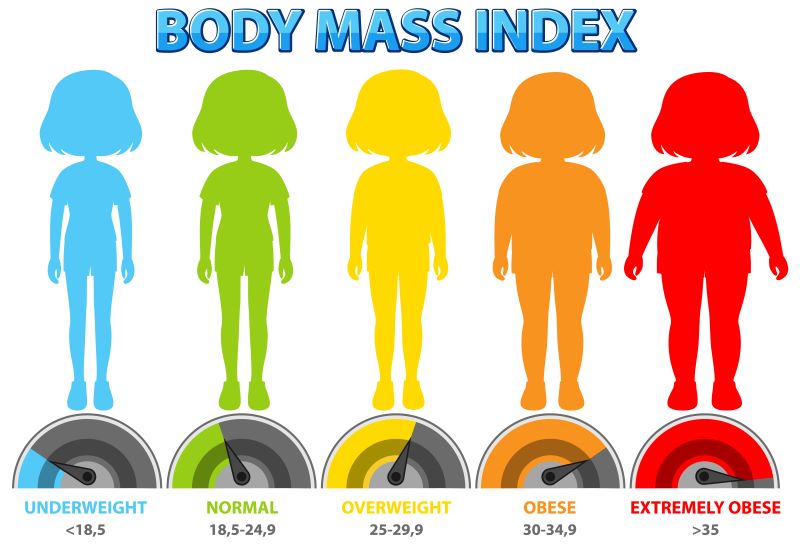Baby Percentile Calculator
Calculate your child's growth percentiles based on WHO and CDC standards. Understand how your baby's height, weight, and BMI compare to other children of the same age and gender.
Important Notes:
- This calculator uses the WHO growth standards for children 0-5 years and CDC growth charts for children 2-20 years.
- Growth percentiles are estimates and should be interpreted by healthcare professionals.
- A single measurement provides limited information. Tracking growth over time is more valuable.
- Children grow at different rates. Being in a lower or higher percentile isn't necessarily cause for concern.
- Always consult with your pediatrician about your child's growth and development.
Understanding Baby and Child Growth Percentiles
Growth is one of the most important indicators of a child's overall health and well-being. By tracking your child's growth and comparing it to standard growth charts, parents and healthcare providers can ensure that children are developing as expected and identify potential health issues early.
What Are Growth Percentiles?
Growth percentiles compare your child's measurements to those of other children of the same age and gender. For example, if your child is in the 75th percentile for height, it means they are taller than 75% of children their age and gender, and shorter than 25%. These percentiles are based on large population studies and represent the normal range of growth variations.
How to Interpret Growth Percentiles
The most important aspects of growth percentiles to understand are:
Consistency is Key
Children typically follow their own growth curve along a certain percentile range. A consistent pattern of growth is more important than the specific percentile. Sudden jumps or drops in percentiles may warrant attention.
No "Ideal" Percentile
There is no "perfect" or "ideal" percentile. Being in the 50th percentile isn't better than being in the 15th or 85th percentile. What matters is that your child maintains a consistent growth pattern over time.
Consider Genetics
A child's growth is influenced by genetic factors. Children of taller parents are likely to be in higher height percentiles, while children of shorter parents may naturally be in lower percentiles.
Proportional Growth
Height and weight percentiles should generally track somewhat together. A significant difference between height and weight percentiles may sometimes indicate issues that should be discussed with a healthcare provider.
Growth Percentile Ranges and What They Mean
| Percentile Range | Interpretation | When to Discuss with Doctor |
|---|---|---|
| Below 3rd | Considered small for age | Should be evaluated, especially if recent drop in percentiles |
| 3rd to 10th | Lower end of normal range | If consistently in this range, usually normal; discuss if recent change |
| 10th to 90th | Normal range | Generally not a concern; discuss significant percentile changes |
| 90th to 97th | Upper end of normal range | If consistently in this range, usually normal; discuss if recent change |
| Above 97th | Considered large for age | Should be evaluated, especially if recent increase in percentiles |
Height-for-Age: Understanding Your Child's Linear Growth
What Height-for-Age Measures
Height-for-age (or length-for-age in infants) reflects a child's linear growth relative to age. It is an excellent indicator of long-term nutritional status and overall health. Consistent growth in height is a sign that a child is receiving adequate nutrition and is generally healthy.
Key Facts About Height Growth:
- Infants grow approximately 10 inches (25 cm) in the first year
- Growth slows to about 5 inches (12-13 cm) in the second year
- From ages 2-puberty, expect 2-3 inches (5-7 cm) per year
- Growth spurts occur during puberty
- Final adult height is significantly influenced by genetics
Height-for-Age Growth Chart Illustration

Typical height-for-age growth curves showing 3rd, 10th, 25th, 50th, 75th, 90th, and 97th percentiles
When to Be Concerned About Height
Potential Concerns:
- Height consistently below the 3rd percentile
- Height significantly different from family pattern
- Drop across two or more major percentile lines
- Growth rate less than 2 inches (5 cm) per year during childhood
- Early or delayed puberty affecting growth patterns
Factors That May Affect Height:
- Genetic factors and family height patterns
- Nutritional status and chronic malnutrition
- Hormonal conditions (growth hormone deficiency, thyroid issues)
- Chronic illnesses (celiac disease, kidney disease, heart conditions)
- Certain medications (long-term steroid use)
- Chromosomal abnormalities (Turner syndrome, Down syndrome)
Weight-for-Age: Monitoring Your Child's Growth and Development
What Weight-for-Age Measures
Weight-for-age is a fundamental measure of a child's overall size and is the most sensitive indicator of acute changes in nutritional status. It helps identify children who may be underweight or overweight relative to their age.
Expected Weight Gain Patterns:
- Birth to 3 months: 1.5-2 pounds (0.7-0.9 kg) per month
- 3 to 6 months: 1-1.5 pounds (0.45-0.7 kg) per month
- 6 to 12 months: 0.5-1 pound (0.23-0.45 kg) per month
- 1 to 3 years: 0.25-0.5 pounds (0.1-0.23 kg) per month
- Preschool and school-age: 4-7 pounds (1.8-3.2 kg) per year
- During puberty: Weight gain accelerates (8-10+ pounds yearly)
Weight-for-Age Growth Chart Illustration

Typical weight-for-age growth curves showing 3rd, 10th, 25th, 50th, 75th, 90th, and 97th percentiles
When to Be Concerned About Weight
Potential Low Weight Concerns:
- Weight consistently below the 3rd percentile
- Drop across two or more major percentile lines
- Failure to gain weight appropriately over 2-3 months (infants)
- Weight loss or plateau when gain is expected
- Significant difference between weight and height percentiles
Potential High Weight Concerns:
- Weight consistently above the 97th percentile
- Rapid upward crossing of two or more major percentile lines
- BMI above the 85th percentile (overweight) or 95th percentile (obese)
- Weight gain significantly outpacing height growth
- Family history of obesity-related health conditions with concerning weight trend
Factors That May Affect Weight
Nutritional Factors
- Dietary intake and quality
- Feeding practices and routines
- Breastfeeding vs. formula feeding
- Introduction of solid foods
- Food security and access
Medical Factors
- Chronic illnesses
- Metabolic disorders
- Gastrointestinal conditions
- Genetic syndromes
- Endocrine disorders
- Medications
Environmental Factors
- Physical activity levels
- Screen time
- Family eating patterns
- Socioeconomic factors
- Psychological factors
Body Mass Index (BMI): Assessing Your Child's Weight in Relation to Height
What BMI Measures and When It's Used
Body Mass Index (BMI) is a calculation that uses height and weight to estimate body fat and assess if a child's weight is appropriate for their height. For children, BMI is age- and sex-specific and is often referred to as BMI-for-age.
Unlike in adults where fixed BMI cutoffs are used, children's BMI is expressed as a percentile relative to other children of the same age and sex. This accounts for the normal changes in body composition that occur as children grow.
BMI is typically used for children aged 2 years and older. For children under 2, weight-for-length is the preferred measure.
The formula for calculating BMI is:
BMI = Weight (kg) ÷ [Height (m)]²
BMI-for-Age Growth Chart Illustration

Typical BMI-for-age growth curves showing standard percentiles and weight status categories
Interpreting BMI Percentiles for Children
| BMI Percentile Range | Weight Status Category | What This Means |
|---|---|---|
| Less than 5th percentile | Underweight | May indicate inadequate growth or nutrition; discuss with healthcare provider |
| 5th to less than 85th percentile | Healthy weight | Appropriate weight for height; continue healthy habits |
| 85th to less than 95th percentile | Overweight | May increase risk for health problems; assess diet and activity |
| 95th percentile or greater | Obese | Higher risk for health problems; discuss with healthcare provider |
Limitations and Considerations for BMI
- Not a direct measure of body fat: BMI is an indirect measure and doesn't distinguish between fat, muscle, and bone mass. Athletic children with more muscle may have higher BMIs despite healthy body composition.
- One of many assessments: BMI should be considered alongside other growth parameters, family history, development, and overall health status.
- Changes during growth spurts: BMI naturally fluctuates during childhood, particularly during puberty.
- Different body types: Children have different body frames and compositions influenced by genetics and ethnicity.
- Not for diagnosis: BMI is a screening tool, not a diagnostic tool. High or low BMI may warrant further evaluation but doesn't alone diagnose a health condition.
Recommendations for Supporting Healthy Growth in Babies and Children
Nutrition Recommendations by Age
Infants (0-12 months)
- Exclusive breastfeeding recommended for first 6 months
- If not breastfeeding, use iron-fortified infant formula
- Introduce complementary foods around 6 months
- Start with iron-rich foods (iron-fortified cereals, pureed meats)
- Introduce a variety of foods and textures gradually
- No honey before 12 months due to botulism risk
- No cow's milk until 12 months of age
Toddlers (1-3 years)
- Transition to whole milk (2-3 cups daily)
- Offer a variety of foods from all food groups
- Provide 3 meals and 2-3 healthy snacks per day
- Respect hunger and fullness cues
- Limit juice to 4 oz per day of 100% juice
- Avoid sugary drinks and excessive sweets
- Be patient with picky eating phases
- Make mealtime positive and pressure-free
Children (4+ years)
- Provide balanced meals with all food groups
- Encourage a variety of fruits and vegetables
- Choose whole grains over refined grains
- Include lean proteins and dairy products
- Limit added sugars and highly processed foods
- Teach healthy eating habits and food awareness
- Involve children in meal planning and preparation
- Model healthy eating behaviors as a family
Physical Activity Recommendations
Infants
- Supervised tummy time several times daily
- Floor-based play to develop motor skills
- Minimize time in restrictive equipment (swings, bouncers)
- Encourage reaching, grasping, and movement
Toddlers
- At least 180 minutes of physical activity daily
- Various types of play (climbing, running, jumping)
- Limit sedentary time to no more than 1 hour at a time
- No screen time under 18 months; limited after that
Preschoolers and Older
- At least 60 minutes of moderate to vigorous activity daily
- Include muscle and bone strengthening activities
- Encourage play that develops fundamental movement skills
- Limit recreational screen time
- Find activities the child enjoys to foster lifelong habits
Sleep Recommendations for Healthy Growth
| Age | Recommended Hours of Sleep (per 24 hours) | Notes |
|---|---|---|
| 0-3 months | 14-17 hours | Including naps; sleep patterns vary greatly |
| 4-11 months | 12-15 hours | Including 2-3 naps, gradually decreasing |
| 1-2 years | 11-14 hours | Including 1-2 naps |
| 3-5 years | 10-13 hours | Some may still need one nap |
| 6-12 years | 9-12 hours | Consistent bedtime routine important |
| 13-18 years | 8-10 hours | Limit screen time before bed |
Adequate sleep plays a crucial role in growth hormone release and overall development. Sleep disturbances may impact growth and development.
Frequently Asked Questions About Baby Growth
Q: How often should I measure my baby's growth?
A: During the first year, babies typically have well-child visits at 1, 2, 4, 6, 9, and 12 months, where healthcare providers will measure growth. After age 1, measurements are usually taken at 15, 18, and 24 months, and then annually. Home measurements between visits can be helpful but may not be as accurate as clinical measurements.
Q: My baby is in the 10th percentile for weight. Should I be concerned?
A: Not necessarily. The percentile itself is less important than the pattern of growth. If your baby has consistently been around the 10th percentile and is meeting developmental milestones, this may be their natural growth pattern. Discuss with your healthcare provider if you have concerns, especially if there's been a significant change in percentiles.
Q: My toddler's weight percentile is much higher than their height percentile. Is this a problem?
A: When weight percentile significantly exceeds height percentile, it may indicate that a child is carrying more weight than is optimal for their height. BMI percentile provides a better assessment of weight-for-height proportion. Discuss with your healthcare provider, who can evaluate if there's a concern and provide appropriate guidance.
Q: Can growth percentiles predict my child's adult height?
A: Growth percentiles alone cannot accurately predict adult height. A child's growth pattern may change during development, especially during puberty. Genetic factors play a significant role in determining final adult height. Some healthcare providers use special calculations that consider parents' heights to estimate a child's likely adult height range.
Q: My baby was born premature. How should I interpret their growth percentiles?
A: For premature babies, healthcare providers often use "corrected age" when plotting growth measurements until 2-3 years of age. This means they adjust for prematurity by calculating age from the due date rather than the actual birth date. Special growth charts for premature infants may also be used. Your healthcare provider can help interpret these measurements appropriately.
Q: Why does my baby's head circumference matter?
A: Head circumference is an important indicator of brain growth, especially in the first 2-3 years when brain growth is most rapid. Consistent head growth along a percentile curve suggests normal brain development. Significant deviations—either too rapid or too slow growth—may indicate underlying health issues that require evaluation.
Q: My child has crossed two percentile lines downward for height. What should I do?
A: Crossing two or more major percentile lines (e.g., from the 75th to below the 25th percentile) may be a sign that warrants attention. Schedule an appointment with your child's healthcare provider to discuss this change. They can evaluate whether this represents a normal variation or if further investigation is needed.
Q: How do I know if my baby is gaining weight appropriately?
A: During the first few months, babies typically gain 5-7 ounces (140-200 grams) per week. Weight gain often slows after 3-4 months. Your pediatrician will track your baby's weight gain pattern at well-child visits. Between visits, signs of appropriate weight gain include regular wet and soiled diapers, alertness when awake, and meeting developmental milestones.
Q: Should I be worried if my child is much shorter than their classmates?
A: Children grow at different rates, and there can be significant height variations among children of the same age, especially around puberty when growth spurts occur at different times. If your child's height has been consistently tracking along their percentile curve and there are no other concerns, this is likely their natural growth pattern. Discuss with your healthcare provider if you're concerned, particularly if there's been a change in growth pattern or if your child's height differs significantly from family patterns.
Q: Can nutrition affect my child's growth percentiles?
A: Yes, nutrition plays a critical role in growth. Inadequate caloric or nutrient intake can lead to slower weight gain and potentially affect height growth over time. Excessive caloric intake can lead to accelerated weight gain. A balanced diet with appropriate nutrients—particularly protein, calcium, zinc, and vitamins A and D—supports optimal growth. If you have concerns about your child's diet or growth, consult with your healthcare provider or a registered dietitian.
Track Your Child's Growth Journey
Regular monitoring of your child's growth is an important part of ensuring their overall health and development. Use our calculator to track your child's growth percentiles over time.
